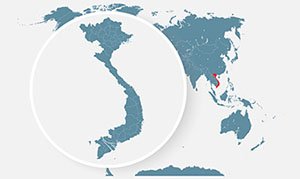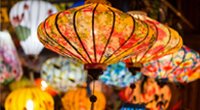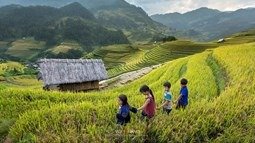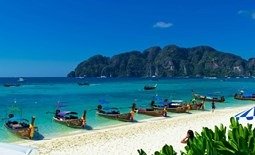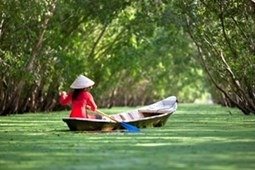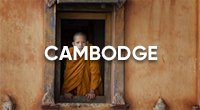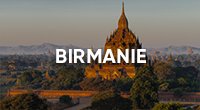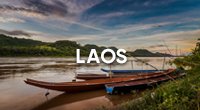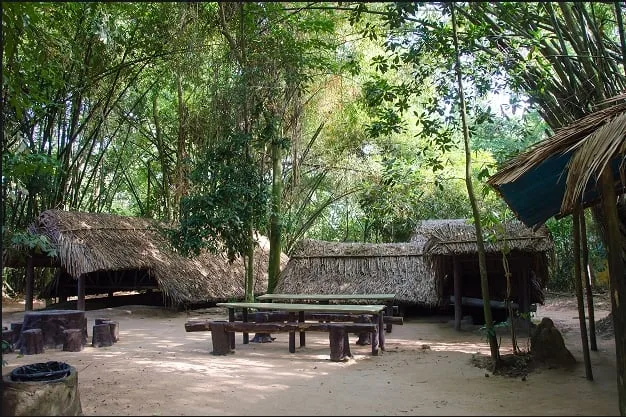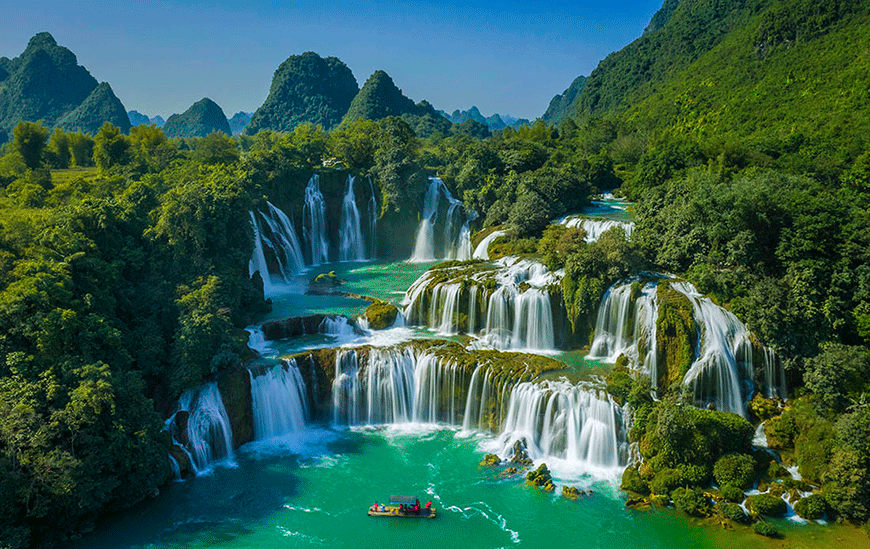Contents
ToggleWhere is Can Tho?
Situated about 170 km southwest of Ho Chi Minh City (around a 3–3.5 hour drive), Can Tho is considered the beating heart of the Mekong Delta. It’s the largest city in the region and serves as its economic, cultural, and educational hub. Despite rapid development in recent years, Can Tho still retains its charming riverside atmosphere, where life revolves around waterways, lush orchards, and fertile rice fields.
The Hau River, one of the main distributaries of the Mekong, flows through the city. Along its banks, you’ll find tree-shaded promenades, vibrant markets, and cafes with outdoor terraces where locals gather to enjoy the breeze. As the sun sets, the waterfront lights up with boats, street food vendors, and romantic river views, making it one of the most memorable experiences for visitors.
Can Tho is also famous for its floating markets (such as Cai Rang and Phong Dien), where trade still happens on boats just as it has for centuries. Add to that fruit gardens, cultural sites, and delicious Mekong cuisine, and you’ll see why Can Tho is often called the “Western Capital” of Vietnam.
✈️ With Can Tho International Airport, the city is very accessible. Daily flights connect it to Hanoi (2h15) and Da Nang (1h20), allowing travelers to reach the delta without backtracking through Ho Chi Minh City.
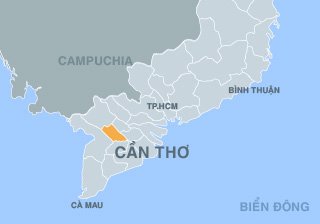
Best Time to Visit Can Tho
Thanks to its tropical monsoon climate, Can Tho enjoys warm weather year-round, with an average temperature of 27–29°C. The city is pleasant to visit almost any time, but each season offers a different experience:
☀️ Dry season (November – April): The best time to visit, with clear skies, less humidity, and perfect conditions for boat trips through canals and floating markets.
🌧️ Rainy season (May – October): Expect short, heavy downpours in the afternoons. While travel may be slightly disrupted, this season transforms the Mekong Delta into a lush, green paradise, with swollen rivers and thriving orchards.
🍉 Fruit season (June – August): This is the peak harvest period in the delta. Visiting during these months lets you tour fruit gardens and taste tropical specialties like rambutan, durian, star apple, mangosteen, and pomelo straight from the trees.
🎉 Festivals worth experiencing:
- Chol Chnam Thmay (Khmer New Year, April): Celebrated by the Khmer community with temple ceremonies, traditional games, and vibrant cultural performances.
- Ok Om Bok (Moon Offering Festival, October/November): A harvest-time festival that includes rituals to honor the moon, paper lantern releases, and thrilling ngo boat races under the full moon.
👉 Best travel window: For both great weather and authentic cultural experiences, plan your visit around spring (March–April) or autumn (October–November) when festivals bring the city to life.
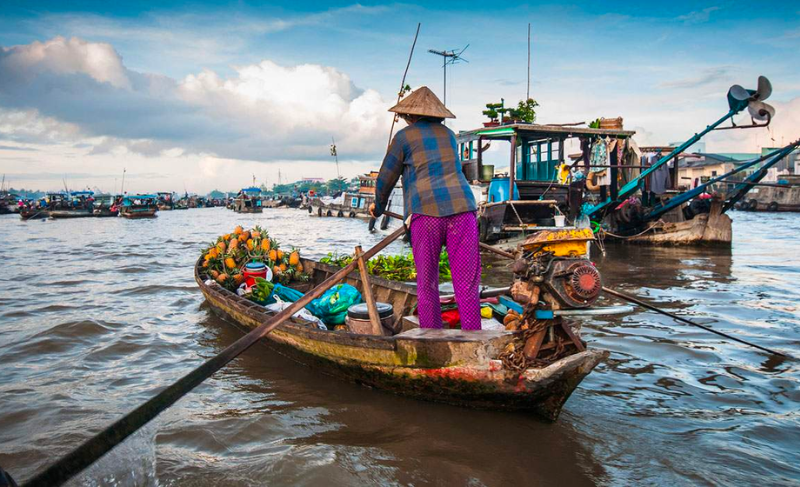
How to Get to Can Tho
Getting to Can Tho is straightforward whether you’re starting from Ho Chi Minh City or flying in from farther afield:
🚗 From Ho Chi Minh City (170 km / ~3–3.5 hours):
- By car/private transfer: Drive along National Highway 1A, crossing the impressive My Thuan Bridge and Can Tho Bridge, which span the delta’s vast rivers. Private cars and minivans can be easily booked through hotels or online travel agencies.
- By bus: Comfortable, air-conditioned sleeper buses run frequently. Phuong Trang (Futa Bus) and Thanh Buoi are among the most reliable operators. Buses depart from Mien Tay Bus Station in Ho Chi Minh City and drop you directly in Can Tho city center.
✈️ From Hanoi or Da Nang:
Direct flights operated by Vietnam Airlines and Bamboo Airways connect to Can Tho International Airport, located just 10 km from downtown. The airport is small but modern, with quick transfers by taxi or ride-hailing apps.
🚤 By river cruise: For a unique experience, some Mekong cruises departing from Cai Be or My Tho include Can Tho as part of their itinerary, allowing you to arrive by boat while exploring the delta’s scenic waterways along the way.

What to Do in Can Tho
🛶 Explore the Floating Markets
No trip to Can Tho is complete without visiting its world-famous floating markets, where trade happens on the river just as it has for centuries. These markets are the cultural heart of the Mekong Delta and provide a fascinating glimpse into local life.
- Cai Rang Floating Market
The largest and most famous market in the Mekong Delta, Cai Rang comes alive at sunrise, around 5:30–6:30 am. Dozens of boats gather, their bows hung with samples of what they sell—pineapples, watermelons, pumpkins, or vegetables. You’ll see locals enjoying breakfast on the water: bowls of steaming hủ tiếu noodles, fresh coffee, and even bánh mì sandwiches. Today, while it’s more tourist-oriented than in the past, Cai Rang still retains a bustling energy and is one of Can Tho’s top attractions.
- Phong Dien Floating Market
Located about 17 km southwest of Can Tho, Phong Dien is smaller, more intimate, and much less crowded. It’s best visited at dawn, when locals barter for daily essentials. Unlike Cai Rang, which focuses on wholesale trade, Phong Dien has a more community-oriented vibe. You’ll find boats selling household items, clothing, and even tools, making it a truly authentic experience.
👉 Travel tip: Book a private boat tour from Ninh Kieu Wharf early in the morning. Many tours combine Cai Rang and Phong Dien, with stops at fruit gardens and noodle workshops along the way.
🏠 Visit Binh Thuy Ancient House & Temple
Can Tho also offers a window into the past through its historic architecture.
- Binh Thuy Ancient House
Built in 1870 by the Duong family, this house is a rare example of Vietnamese architecture blended with French colonial influences. Its exterior features French neoclassical designs, while the interiors display traditional Vietnamese antiques, ancestral altars, and carved wooden furniture. The house gained international fame after appearing in the film adaptation of Marguerite Duras’ novel The Lover. A visit here feels like stepping back in time.
- Binh Thuy Temple
Just nearby, this 19th-century communal house showcases vibrant wooden carvings, colorful murals, and traditional roof decorations. Dedicated to local deities, it’s a reminder of the city’s strong cultural and spiritual traditions.
⛩️ Discover Can Tho’s Religious Diversity
Can Tho is home to a blend of Vietnamese, Chinese, and Khmer communities, reflected in its diverse religious landmarks.
- Ong Temple (Quan Cong Temple)
Built in 1894 by Chinese merchants, this temple near Ninh Kieu Wharf is one of Can Tho’s most beautiful. Its ornate woodwork, colorful ceramic statues, and incense-filled halls honor Quan Cong, a symbol of loyalty and righteousness in Chinese culture.
- Munir Ansay Pagoda
This striking golden Khmer pagoda was built in the mid-20th century by the Khmer community. With its Angkor Wat-inspired architecture, intricate details, and serene courtyard, it offers a peaceful retreat from the busy streets.
🚤 Take a Mekong Delta Cruise
A boat trip is one of the best ways to understand the delta’s rhythm.
- Day Cruises
These tours often combine floating markets, orchard visits, canal rides, and bird sanctuaries such as Bang Lang Stork Garden. You’ll navigate both the main river and hidden canals shaded by coconut palms.
- Dinner Cruises
Departing from Ninh Kieu Pier, dinner cruises offer a more romantic experience. As the city lights up, you can enjoy a traditional meal on board, often accompanied by đờn ca tài tử (Southern Vietnamese folk music, recognized by UNESCO as Intangible Cultural Heritage).
🍜 Learn Traditional Noodle-Making
One of Can Tho’s unique cultural experiences is visiting a traditional noodle workshop.
At places like Lo Sau Hoai, you can watch artisans prepare hủ tiếu (rice noodles) using age-old techniques. The noodles are sun-dried on bamboo racks, then cut and packaged. Today, some workshops even make colorful noodles using natural ingredients: green from pandan leaves, orange from gac fruit, purple from butterfly pea flowers. Visitors are often invited to try making noodles themselves, followed by a delicious tasting session.
🍊 Visit Ba Lang Fruit Garden
Located just outside the city, Ba Lang is one of Can Tho’s most popular orchards. Visitors can walk shaded paths under rambutan, longan, durian, and mangosteen trees, sampling fresh fruit along the way. Many gardens also serve traditional Mekong meals, making it a perfect day trip for families.
🚴 Cycle Through the Countryside
For those who want to explore beyond the city, cycling tours offer an eco-friendly and immersive way to discover rural life. Pedal along quiet village roads, cross narrow bridges, and pass rice paddies and lotus ponds. Along the way, you’ll likely meet friendly locals who invite you to stop for tea or fresh fruit.
✨ Don’t Miss Ninh Kieu Wharf
The beating heart of Can Tho, Ninh Kieu Wharf is the city’s iconic riverside promenade. By day, it’s a lively hub of boats and shops; by night, the pedestrian bridge glows with colorful LED lights, offering sweeping views of the river. Street food stalls line the area, making it the perfect spot for an evening stroll.
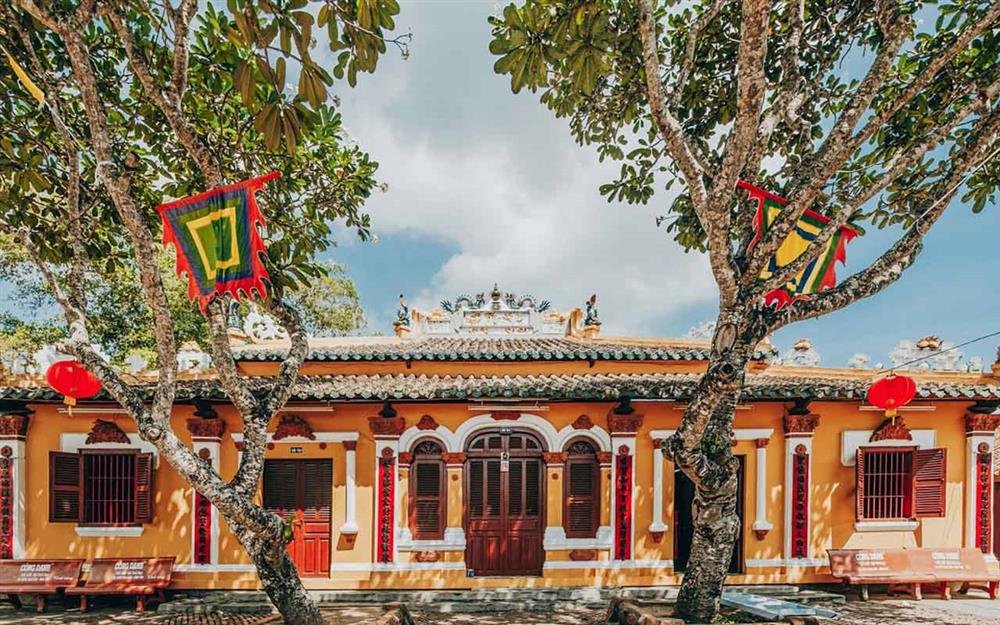
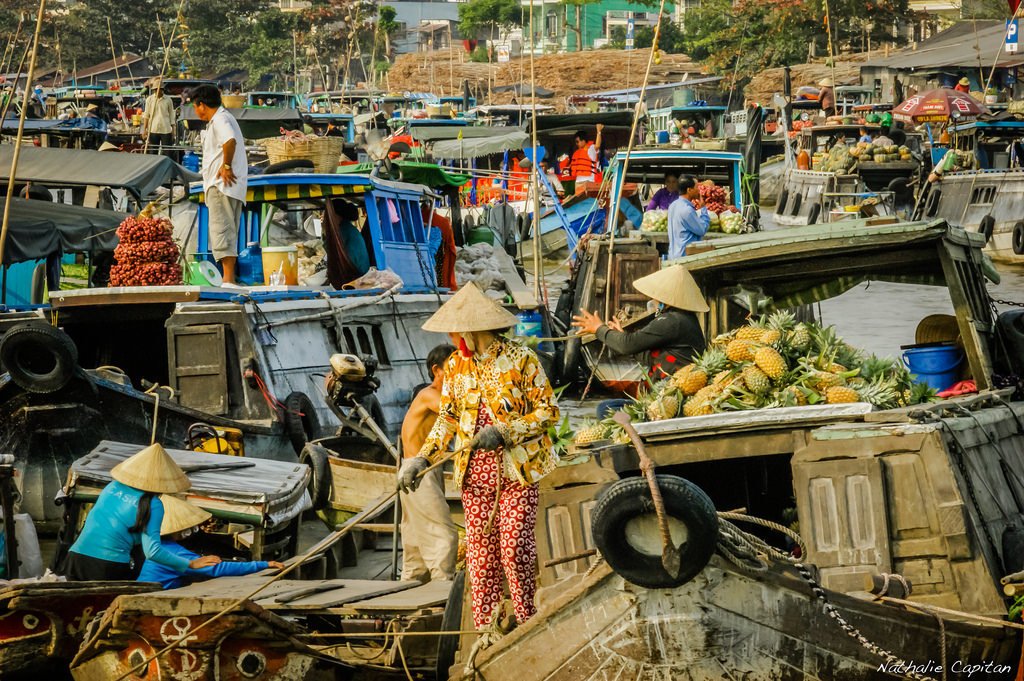
Must-Try Food in Can Tho
The Mekong Delta is known as Vietnam’s rice bowl, and its cuisine is as abundant as the land itself. In Can Tho, you’ll find dishes that reflect both the richness of local produce and the creativity of the people.
- Bánh Xèo (Vietnamese Pancake)
Can Tho’s version of this crispy rice pancake is bigger and thinner than in the north. It’s filled with shrimp, pork, and bean sprouts, and served with fresh herbs and dipping sauce.
- Lẩu Mắm (Fermented Fish Hotpot)
A bold and fragrant specialty, made with fermented fish broth, vegetables, rice noodles, and a variety of meats or seafood. Its unique taste is not for the faint-hearted but beloved by locals.
- Bánh Cống
A local favorite snack: deep-fried cakes made from rice flour, mung beans, and minced pork, topped with a whole shrimp. Crispy on the outside and soft inside, they’re best enjoyed with herbs and sweet-sour fish sauce.
Other must-tries include grilled snakehead fish wrapped in lotus leaves, pomelo salad, and coconut-based desserts.
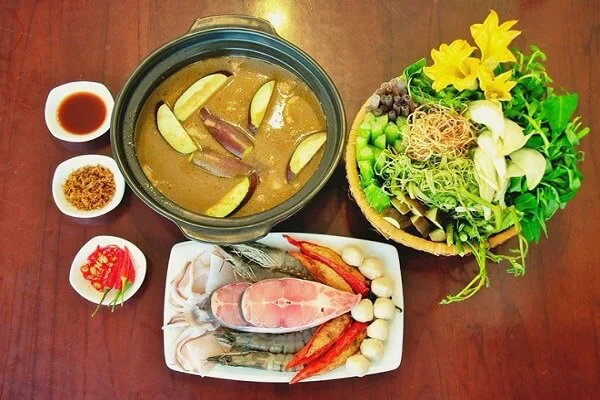
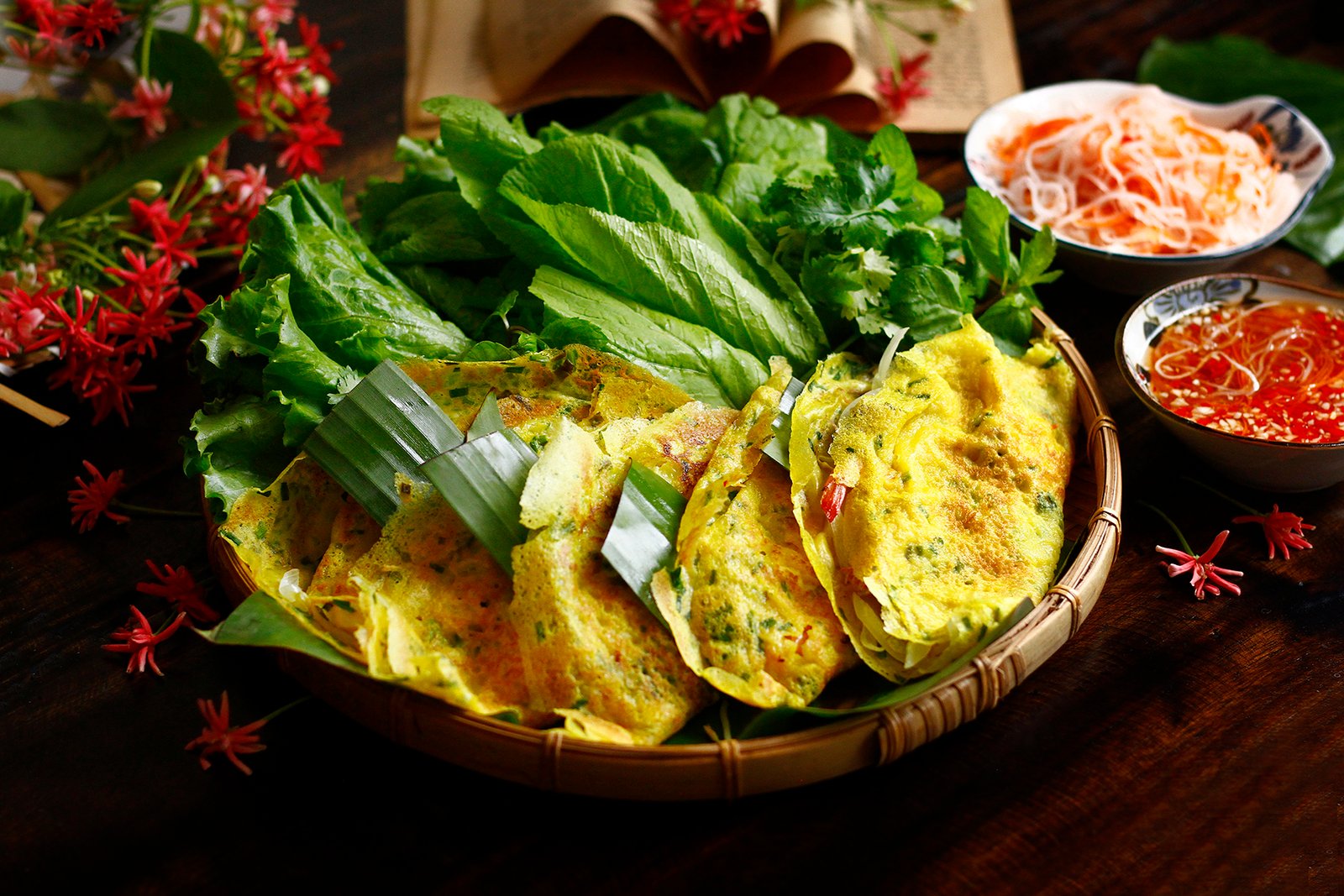
Where to Stay in Can Tho
From luxury resorts to rustic homestays, Can Tho offers a wide range of accommodations:
🌿 Can Tho Ecolodge
Rustic wooden bungalows built on stilts, surrounded by gardens and canals near Cai Rang Floating Market. Eco-friendly, tranquil, and immersive.
🎋 Bamboo Eco Village
About 25 km from the city, this eco-stay is entirely constructed from bamboo. It offers simple, comfortable rooms with stunning natural surroundings—ideal for travelers seeking peace and authenticity.
⭐ Azerai Can Tho
A luxurious resort set on Au Islet, accessible only by boat. With elegant villas, a spa, swimming pools, and riverside dining, it’s the most exclusive place to stay in the city.
🏡 Homestays
For cultural immersion, try a family-run homestay along the canals. You’ll enjoy home-cooked meals, learn to make traditional dishes, and experience true Mekong hospitality.
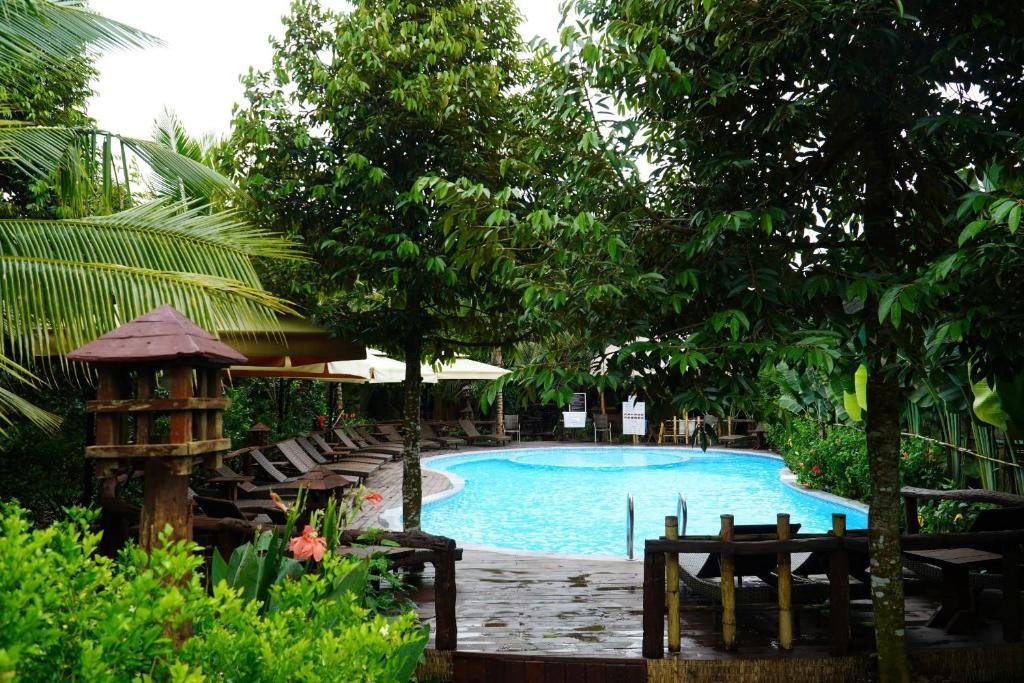
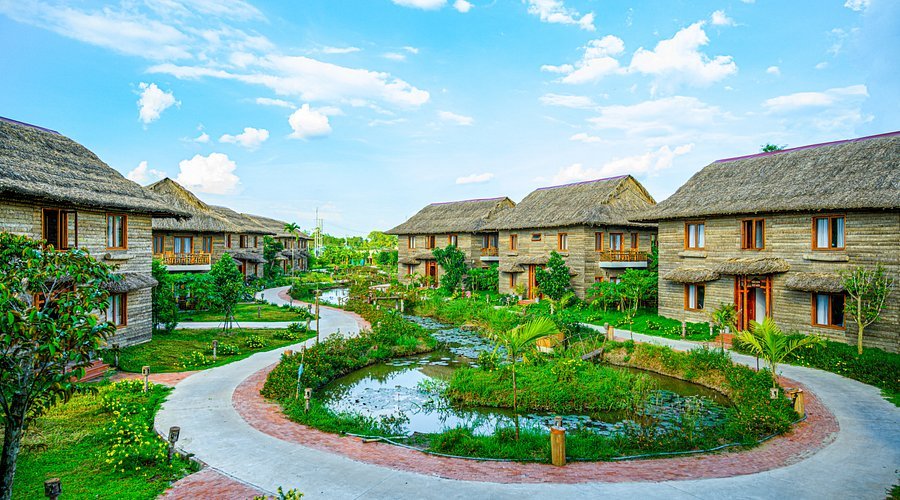
Final Thoughts
If you want to experience the true spirit of the Mekong Delta, Can Tho is the place. From lively floating markets and ancient houses to tropical orchards and unique noodle-making traditions, this city is a perfect mix of culture, cuisine, and river life.

